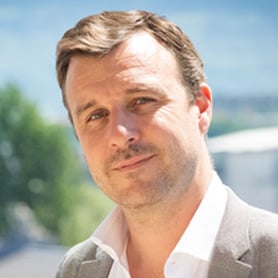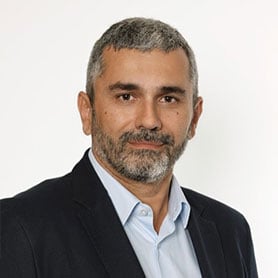Why Prioritising ESG will Finance your Future
Q&A with dss+ experts to discuss why private equity (PE) companies are recognising the urgency to integrate economic, social and governance (ESG) to maximise long-term value by creating a safer, more efficient and sustainable business.

Q.
What are the impact and risks of not having fully engaged leaders who understand the need to bring the ESG topic into the value creation agenda?
HS: We know that a lot of PE funds are not using ESG as part of their acquisition process in terms of due diligence or in evaluating the risks that exist. As the world is changing rapidly and accelerating, current portfolios do not realise the full value that could be created through ESG. There are a multitude of angles that may not be perceived as part of the ESG topic, including risk, safety and reputational risk. For example, if you are looking at energy efficiency, that is an ESG topic. It should not be a stand-alone topic; it should be fully integrated into your day-to-day business. If you are not talking about ESG you are already at risk, but if you're not integrating into your day-to-day operations and are in compliance mode, you're probably even more so at risk.
DR: ESG is not just about having a nice financial report and hugging trees. It is about identifying the relationship between your business and the rest of the world, the impact on the environment within the four walls of the company and the whole value chain, both upstream and downstream. In the world we live in today, it is simply not possible to look into the future without the knowledge of the impact of an activity. You are putting your company at risk.
"If you are not talking about ESG you are already at risk, but if you're not integrating it and are in compliant mode, you're probably even more so at risk."
– David Rochat, Sustainability Services Director, dss+
Q.
Why is it important to engage on the ESG journey now?
DR: The world is waking up from a global pandemic and realising how fragile it is. People are anxious about the future, seeing conflict in Europe, with strong repercussions in terms of access to energy, access to raw materials and so on. If we want to look calmly and confidently into the future, we need to manage all consequences that could affect businesses, people, and communities. The worry about climate change, high spike in fuel prices, the fact that our food is produced thousands of kilometres away and this may be disrupted, is very real. Looking into ESG is not so much about KPIs and the reports, it's about looking into your ecosystem and how to make it stronger and more sustainable. The pandemic showed that companies that engaged in this route had better relationships with their clients and suppliers, and highly committed staff who adapted to new ways of working. Those who had looked at their business in a systemic way are better prepared for change and transition.
HS: Some industries have always been focused on a licence to operate because it's mandatory. In industries like oil and gas, mining, and metals, where you have a major perceived and visible impact, that licence to operate has always been one of the top 10 areas of focus and attention. What we are seeing now is almost a licence to operate 2.0. The new generation brings a consumer perspective to these industries, forcing companies to incorporate ESG into their strategy to continue to operate.
Q.
So why do recent reports cite that 80% of new deals do not include an integrated ESG framework as part of the evaluation?
HS: I think it is because PE funds have not yet integrated it in their thoughts or fully understand what ESG actually means. In fact, during our conversations with PE funds, we are coming across more situations where deals are being turned down because the PE company realised that they were not in control of what ESG risk it would bring into their portfolio, nor how to manage it.
DR: It is important to recognise that we are at a turning point right now. In five years' time all PE companies will be integrating ESG into analytical frameworks. What was probably nice to have until now, will become mandatory by law, by competition, by markets, by expectations from clients, investors, and from the supply chain. We are seeing a convergence of pressure points coming from the regulator to the market, to the value chain which creates a strong demand for an integrated approach.
"Looking into ESG is not so much about KPIs and the reports, it's about looking into your ecosystem and how to make it stronger and more sustainable."
– Helder Santos, Director of Private Equity EMEA, dss+
Q.
If you are a part of a PE or a portfolio leadership team, and embarking on an ESG journey, how do you see beyond the frameworks, standards, scoring cards? Where do you start?
DR: It looks complicated but it's actually quite simple with the right tools and processes. It's a rather well-structured approach, focusing on priorities with a deep knowledge of the business. You can do ESG reporting using several frameworks, but our approach here at dss+ is universal. We map out the material issues in a clear, iterative and participative way. The simplicity of this process is appreciated by the clients we work with. You take control of the narrative and move from being reactive, filling in forms and questionnaires, to being proactive - because you have a method, a process and a roadmap to move forward. The partnership we create in this way is a commitment, which may take time, but is well-structured and rewarding.
HS: There is the compliance journey, but I believe you need to start by looking at the value creation levers for your business and how each one relates to the ESG chain, or 17 sustainable development goals (SDGs). It's not difficult to start linking how you create or protect value versus SDGs, and how to then prioritise implementable actions to deliver that value. It doesn't need to be sequential; it can be done in parallel.
Q.
What do you mean by creating value with ESG?
DR: When you work to organise and increase your control and managerial maturity to handle a problem, whether it's physical risk for your workers or your impact on climate change, you actually increase your efficiency because you are improving the way you work, you're communicating better and breaking silos. This results in a shift from being dependant to being interdependent and dynamic. You're also building intrinsic value in the company because by looking at it from a systemic view, you reduce your exposure to risk. How much more is a company worth if it understands its interactions with the rest of the world? How much less is it worth if it doesn't anticipate risks outside its direct boundaries? Finally, but not least is the capacity to evolve and recognise agility as a value. The ESG exercise forces you to look 360 degrees around you, upstream and downstream in your value chain; look at compliance, look at the risks, the relationship you have with stakeholders, suppliers, and clients. You increase your market awareness and so are in a better position to innovate and have the competitive advantage.
HS: There is a clear operational bottom-line value through a variety of value creation levers that can be applied, such as energy and operational efficiency. There's significant value that can be realised. But there is also the reputational value, that will also affect your top line and the way customers perceive you. There is also the impact on the world itself and the moral impact of doing what is right. Value to life by eliminating risks to the environment and risks to life itself. Whether it's B2B or B2C, the perception of your impact in the world will impact the way consumers see you.
Q.
Private companies are usually focused on growth. How can investing time and resource in ESG benefit future growth?
HS: Businesses often grow through efficiencies such as productivity and raw materials. Efficiency is a component of ESG and is a way for companies to grow and create value. The reality is that it is through financing companies that ESG improvements may be done, without realising it.
DR: It's also important to highlight that we've seen some companies with low ESG scores when they thought they were doing the right thing. Embarking on a structured journey rapidly improves the ratings by structuring the data and getting the people upskilled and organised to tackle the topic in the right way. There clearly is an investment to commit to but, as Helder says, these resources are directly invested into the company's future.
Q.
What would be the main advice to someone looking into ESG and its value creation potential?
HS: At CEO/board level you should not be talking about ESG, you should be talking about a sustainable, efficient business, because ESG should be embedded in the day-to-day way of operating. For example, operational risk management is a lever of ESG – a lot of companies are managing risks but are they going from compliance to a value driven mindset? To really manage risks, whether that's employer risk, process or low frequency but high consequence risks, are you using the frameworks, standards, norms to look into the business in the right way to deliver and protect the value that your organisation has?
DR: The KPIs and metrics are amongst many tools to help you manage your risk profile, 360 degrees around the business. For the commitment to truly add value, it has to come from leadership. You cannot just outsource ESG to a satellite unit in charge of creating reports – that does not add any value at all. For it to be core business, leadership needs to get involved, and if needed - to skill-up. What we often observe is companies with a strong culture, good people doing the right thing, nice values, and nice behaviours, but poor managerial maturity and organisational capabilities to handle the topic. My main advice is to not only put the company on the path of ESG, but also on a capability and organisational journey.
ESG journey - 4 Steps to take:
STEP 1
Identify the full potential of ESG journey for your business across the full value chain.
STEP 2
Prioritise effort vs. rewards.
Any transformation needs early wins. Pick something you're already doing that needs to go to the next level to reach full maturity. Or address something you may not be doing that can impact your business quickly. Slice and dice your efforts as need be and execute quick wins for further buy-in from stakeholders.
STEP 3
Implement.
Create value. Don't just look at the plan. Realise the value.
STEP 4
Leverage ESG as your truly competitive advantage.
Exploit your new potential.



